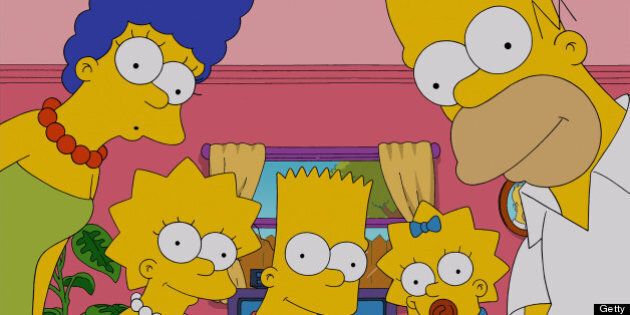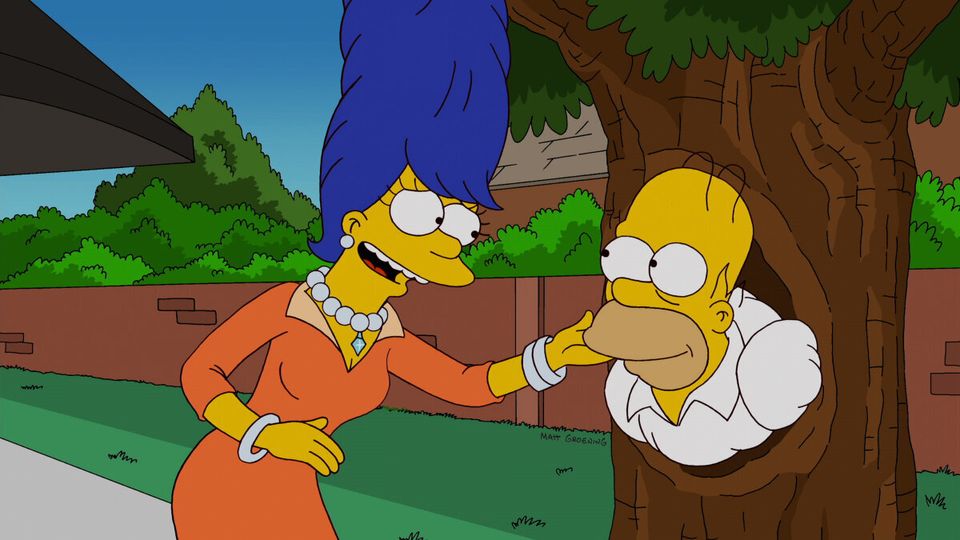
This September, "The Simpsons" will officially hit Season 25, making it an even quarter-century for the longest-running primetime animated show in television history. (It still has a few years to catch the 635 episodes of "Gunsmoke.")
Emmy-winning animator David Silverman has been with the show since the beginning, even before the beloved TV family had their own timeslot, when they were just a weekly segment on "The Tracey Ullman Show." In the years since, he's acted as a consulting producer, title designer, storyboard artist, "Spider Pig" lyricist, and directed episodes from Season 1 to the upcoming Season 25, along with the show's feature-length movie and Oscar-nominated short film. So, basically, we wouldn't want to be up against him on "Simpsons" Trivia Night.
With Silverman being honored as the keynote speaker at the second annual Toronto Animation Arts Festival International, HuffPost Canada TV spoke with the prolific animator about the show's early days, the origins of Milhouse and getting ripped off by Stephen King.
HuffPost TV: Do you remember the first thing that you did for "The Simpsons?"
David Silverman: The very first thing I did was on "The Tracey Ullman Show," the very first "Simpsons" episode, in mid-March of 1987. I think the first thing I did was I animated Maggie going [imitates Maggie with her pacifier] as Marge tucked her into bed singing, "Rock-a-bye baby, on the treetop." And then Maggie goes into this fantasy about "When the bow breaks, the cradle will fall," and I did a cycle of Maggie going "Ahhh!," falling down into the abyss.
My 30th birthday had just passed, so I was visiting my folks. And I was finishing the very first "Simpsons" episode in Maryland on my makeshift animation desk, which consisted of a piece of plexiglass with a light underneath it, running out of animation paper. On a Sunday. In Maryland. [Laughs] No place to buy animation paper in Maryland on a Sunday.
What'd you think of the show at the time?
Oh, I was really tickled. I was actually considering other options in my career. But then I heard about a chance to work with Matt Groening, and I loved "Life in Hell" [Groening's weekly comic strip], I loved the drawings, I loved the humor. I thought, "Well, that sounds like fun." And from the very beginning, I thought we could have a great time with this. Every week on "The Tracey Ullman Show," we were just doing our own thing really and having a great time. We felt very subversive. It was like, look, that's our animation up there on a primetime show!
After the initial run on "The Tracey Ullman Show," what were some of the first characters that you came up with to expand the Simpsons' world?
One of the more interesting characters to come up with was Milhouse, because he was developed for a Butterfinger commercial. [Laughs] The very first Butterfinger commercial was done in November of 1988. We started working on "The Simpsons" as a series in April of '89 and we had to come up with a character to be Bart's friend for this Butterfinger commercial. So Matt had all these drawings from a show that did not get picked up by NBC -- I'm sure they're unhappy about it now. It was kind of like a Saturday morning show, it was going to be like "Recess." But they didn't pick it up and he had all these characters he designed. So we flipped through them and pointed to Milhouse and said we like this one best.
Krusty the Klown, of course, and Grandpa, came out during "The Tracey Ullman Show," but [when] the universe was being created, we had Moe the bartender and Barney; I think the name Barney was chosen like Barney in Fred Flintstone. And then Mr. Burns and Smithers came along, this sort of bizarre Dickensian Machiavellian evil owner of the nuclear power plant. And then Apu, the Indian owner of the 7-Eleven, aka the Kwik-E-Mart. Chief Wiggum just kind of gradually developed. We had to have a chief of police for 'Homer's Odyssey,' and the voice that Hank [Azaria] tried at first was a David Brinkley impression that evolved into Edward G. Robinson.
Those were the main characters that started getting developed in the first season, and they really stuck. Obviously Moe and Barney were intended to be main secondary characters, but Apu and Wiggum maybe not so much. Then it just kept going like that. Professor Frink was a one-off character in an episode called 'Old Money,' where Grandpa was fielding different people to give his inheritance to, to see what they would develop. It was just a one-off joke, but the voice was so funny. And the Jailbird was also a one-off character, but Hank Azaria's "Give me your money, dude" voice was so funny that he inspired a funny drawing and became a go-to character for laughs.
That's something I was interested in asking you about. What comes first when you're developing these characters, the voice or the look? And how much one does inform the other in those early stages?
The voice artists rarely see a character. The table read's on Thursday, and as they're reading it, they're developing the voices. So I'd say the voice often is developed first. But not always. Sometimes a character is developed and then the voice seems to fit, and then maybe the character will be adjusted. Generally speaking, I think the voice informs the character. The Jailbird character is a good example, and also Professor Frink. When [Azaria] did that Jerry Lewis "Nutty Professor" voice, we decided, well, let's do a similar "Nutty Professor" character. Although Kent Brockman was based on a newscaster here in LA, even before Brad Bird heard the voice. Jerry Dunphy. And Hal Fishman, sort of like a combination of [the two]. If you look up Jerry Dunphy, he was an LA news anchor.
How does the process going into Season 25 compare to those early days? I'd imagine it's significantly different.
Much different. To quote one of my favorites, "Monty Python," in Season 1, "We're making it up as we go along!" Things like, oh, we need a production designer. I remember I was doing this episode, the first episode I directed was called 'Bart the Genius.' It was like, "Aw crap, we need to design for the school. What does the school look like?" And I was driving to work and I saw a school that, it didn't look exactly like it, but I looked at it and I said, "Well, it's something like that." [Laughs]
Now we have a whole design team of terrific designers. And one of our great producer/writers, Bill Odenkirk, he's kind of our design maven. He'll go through the script and he'll write design notes on what he thinks could be good points of reference. So we have a whole process. It's like a semi-well-oiled machine.
Speaking of design, I assume you've heard of the guys that built the real-life Homer car.
Yes, that's fantastic. I love the fact they did that. It's like the other thing, I think it was done for Sky One, you've seen the real-life opening title sequence, right? It's amazing the inspiration that the show has led to. Although I found out, I thought that "The Simpsons" had inspired tomacco, but apparently somebody had made a tomacco before the "Simpsons" episode. Which to me, is hilarious.
You guys did get the jump on Stephen King and "Under the Dome," though.
We did! [Laughs] And I don't doubt that Stephen King had the idea prior to us. But it's just funny to us that it's like, really, you didn't pay attention? It's like, "Oh, I didn't see that film coming out." [Laughs] Really? I did like that we were able to make fun of that in a "Simpsons" episode.
Obviously what "The Simpsons" has accomplished over the years is pretty rare. Do you think we'll ever see anything like it again, in terms of both its cultural impact and its longevity?
Boy, it's tough. In some ways, I would make the case that "South Park" has had some success in that direction, and even "Family Guy." Yes, "Family Guy" was inspired by "The Simpsons," but I think Seth [MacFarlane] has carved out his own niche in that regard. The humor style is different, and his show's been on the air for a while.
But I don't know, even as successful as those shows are -- they have legions of fans and so forth -- I don't think they have the same cultural impact "The Simpsons" has had. Certainly not on a global scale. Because I don't know if those two shows translate as successfully globally as "The Simpsons" does. I've gone to film festivals in France and Germany and Italy and I'm amazed at the love for the show by fans. It's as deep as America, sometimes in some ways, I don't know if it's more, but they certainly love it. So I guess the answer's no. [Laughs] Never! Never gonna happen! Don't even think about it! And then of course, tomorrow there will be a show that wipes us off the map.
"The Simpsons" is returning for its 25th season in September on Fox, and you can catch David Silverman in Toronto on July 27 for the TAAFI.
Also on HuffPost
